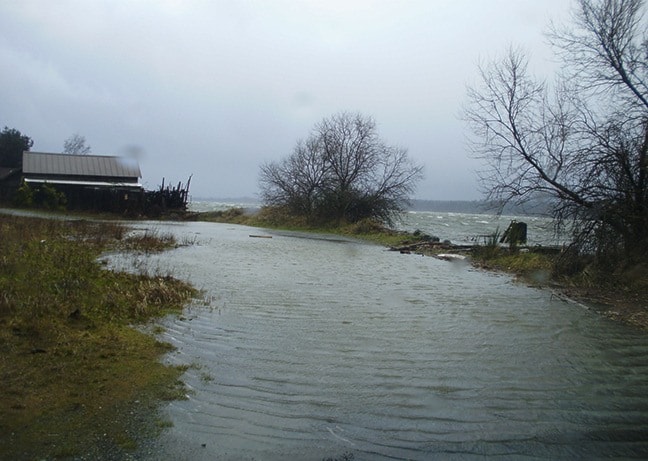In October 2014, in an article published in the local news media, P. Horgen, retired University biologist and Board Chair of Project Watershed stated, “Coastal zones such as estuaries, are particularly vulnerable to sea-level rise and extreme storms, facing serious impacts including: (1) inundation and displacement of wetlands and lowlands; (2) increased coastal erosion; (3) increased coastal storm flooding; and (4) salination.
In an announcement released earlier this month, both NASA and NOAA (National Oceanic and Atmospheric Administration) reported that 2014 was the warmest year since global temperatures were first recorded in 1880.
This year was also the 38th consecutive year that global temperatures were above average.
Greenhouse gas trends are responsible for a majority of the increased temperatures that we are seeing, reported Gavin Schmidt, director of NASA’s Goddard Institute for Space Studies. Temperatures are nearly one degree Celsius above pre-industrial temperature averages.
“Trends in greenhouse gases are continuing, so we may anticipate further record highs in the years to come,” Schmidt said. “Impacts from increasing temperatures are seen in a growing number of heat waves, rising sea levels, increasing intensity in precipitation, among other effects.”
We have direct experience with this trend in the Comox Valley, with two of the largest storms affecting flooding during the last two months of 2014.
Global temperatures in 2014 were 1.24 degrees F (approximately 0.69 C) above the 20th century average temperatures.
What can we do in the Comox Valley to mitigate this trend? Local stewardship groups and governments can make a major difference by considering and encouraging changes in our daily habits and long-term planning for land use and natural resource management following the precautionary principle.
Whenever possible we can walk, bicycle, car pool etc. to carry out our daily activities;
We can use good judgment and keep development away from shorelines;
Make sure a riparian zone is left near streams and rivers to protect from dramatic runoff in major storms such as we had on Dec. 8, 2014.
We can encourage local governments to put into practice the regional sustainability strategy of 2013, and adhere to our Regional Growth Strategy by densifying our town and city. And encourage human movement within the municipal boundaries that does not result in greenhouse gas emissions.
We can become an important component in the solution rather than a major factor in the cause of climate change.
